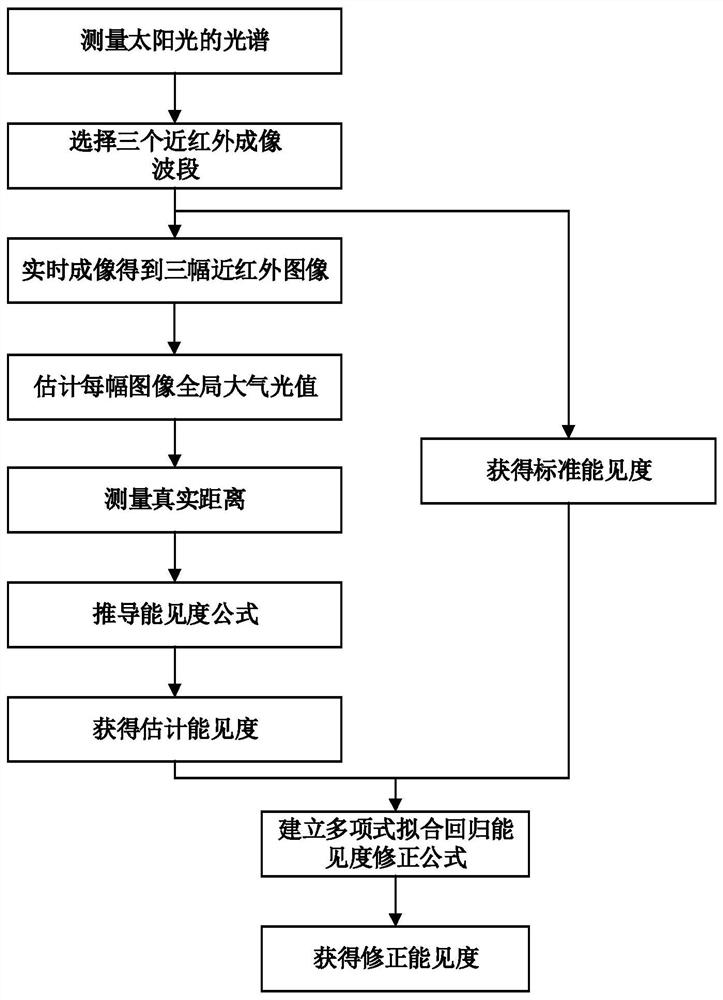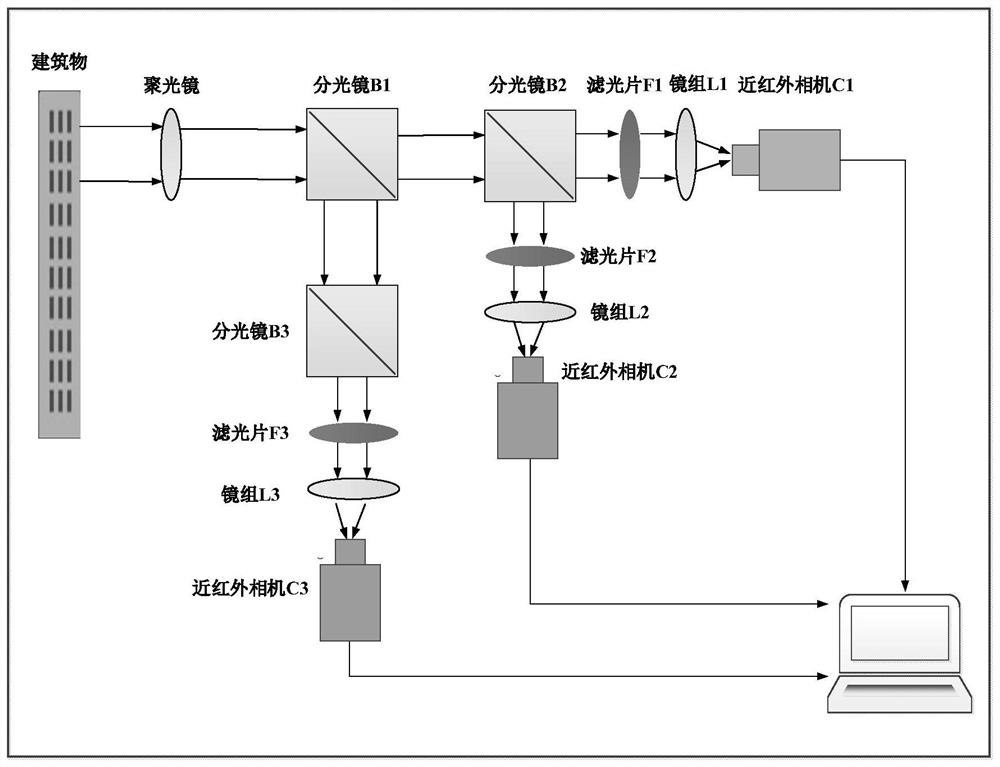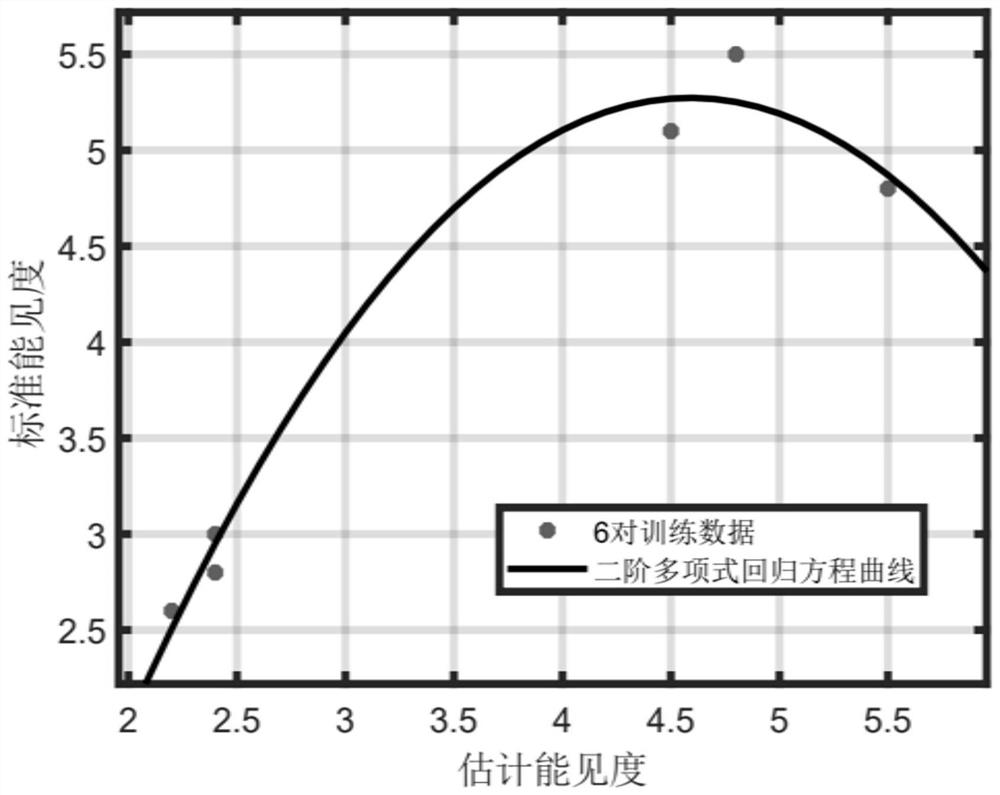Correction visibility estimation method based on three-spectrum real-time imaging and polynomial regression
A polynomial regression and real-time imaging technology, which is applied in color/spectral characteristic measurement, material analysis through optical means, and measurement devices, can solve a large number of training samples and other problems, and achieve the effect of reducing errors
- Summary
- Abstract
- Description
- Claims
- Application Information
AI Technical Summary
Problems solved by technology
Method used
Image
Examples
Embodiment Construction
[0063] In order to make the object, technical solution and advantages of the present invention clearer, the present invention will be further described in detail below in conjunction with the accompanying drawings and embodiments. It should be understood that the specific embodiments described here are only used to explain the present invention, not to limit the present invention. The present invention is described in further detail now in conjunction with accompanying drawing.
[0064] Embodiments of the present invention provide a revised visibility estimation method based on three-spectrum real-time imaging and polynomial regression, such as figure 1 The method shown is:
[0065] Step 1: Using three near-infrared cameras C1, C2 and C3, three beamsplitters B1, B2 and B3, and three near-infrared imaging bands λ 1 , lambda 2 and lambda 3 Corresponding filters F1, F2 and F3, three mirror groups L1, L2 and L3 build a three-spectrum real-time imaging optical system;
[0066]...
PUM
 Login to View More
Login to View More Abstract
Description
Claims
Application Information
 Login to View More
Login to View More - R&D
- Intellectual Property
- Life Sciences
- Materials
- Tech Scout
- Unparalleled Data Quality
- Higher Quality Content
- 60% Fewer Hallucinations
Browse by: Latest US Patents, China's latest patents, Technical Efficacy Thesaurus, Application Domain, Technology Topic, Popular Technical Reports.
© 2025 PatSnap. All rights reserved.Legal|Privacy policy|Modern Slavery Act Transparency Statement|Sitemap|About US| Contact US: help@patsnap.com



